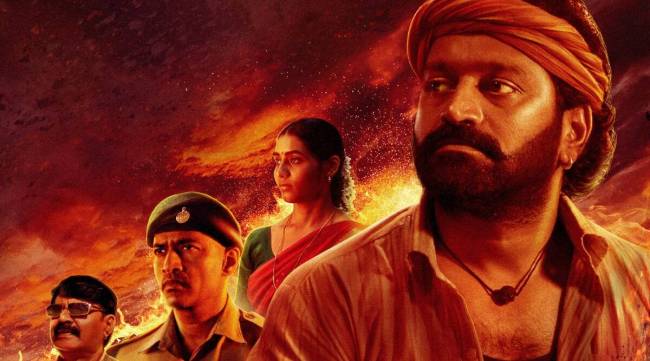Opinion Kantara, a film that moves beyond identity politics and reminds us of the gods among us
Kantara shows us that despite centuries of secularism and millennia of monotheism, the old gods and their humble yet awe-inspiring forms are all still here with us in our hearts
 I have had the privilege (and perhaps fear) of having witnessed moments such as those depicted in Kantara in the course of my own childhood four or five decades ago, writes Juluri.
I have had the privilege (and perhaps fear) of having witnessed moments such as those depicted in Kantara in the course of my own childhood four or five decades ago, writes Juluri. It is perhaps just a coincidence and not a planet-wide multi-deity intervention that the Kannada movie Kantara has sparked a fire of fierce reverence for the gods of the forest in India just as another important conversation about indigeneity, colonialism and cultural survival took place recently among Native American scholars in the United States.
Vine Deloria’s book God is Red, a searing critique of religious colonialism that also contains the seeds of what might well be a soaring vision of global indigenous spiritual revival, was the topic of a symposium recently at Harvard University to mark 50 years of its publication.
While the importance of Deloria’s work to younger generations of Native American students and scholars is clear, what might also help ease the deeply polarised situation around religion and politics in South Asia is a deeper engagement between South Asia studies experts and the experiences, practices and beliefs (in that order), of people who have resisted the centuries-old programme to eliminate their traditional ancestral cultures by imperial-monotheists, colonial “civilisers”, or their successors, the postcolonial Indian “reformers”.
A respectful study of other indigenous traditions and experiences of deities and an honest reassessment of the terrain of identity politics in India and South Asia studies, are all necessary to do this, and the sweeping popularity of Kantara gives us a timely example to begin this process.
The reception of Kantara has two different stories at play around it. One is the controversy about identity; whether local, “mulnivasi” traditions are being “culturally appropriated” by “Hindu” or “Brahminical” forces. This issue has played out in other contexts too — recently with the movie Ponniyin Selvan 1, for example, with some actors and academicians insisting that Raja Raja Chola could not be called a Hindu.
Such controversies typically follow a pattern. If you say something is “Hindu,” the academic consensus will insist that it’s a Hindu nationalist fantasy because Hinduism didn’t exist before the 19th century. If you say it’s not, the self-styled right-wingers and nationalists will call for an abolition of the humanities altogether.
Common sense of course will suggest that one can be more than one thing, and yet the politics of labels and definitions will not let that be at all.
It is here that the experience of Kantara becomes more relevant than any mere label. At the edges of nature, culture, art and what we might even call reason, Kantara’s characters show us a world that we are clearly yearning to see again. That world is not merely “the paranormal” or “horror”, both imported categories, but something more primordial and intense — that of who we were when our elders and ancestors still lived with us, and what it was they saw, they insisted they saw.
I have had the privilege (and perhaps fear) of having witnessed moments such as those depicted in Kantara in the course of my own childhood four or five decades ago. The world of traditional arts was still alive in Andhra Pradesh despite the loss of old forms of patronage from temples and kings, and my mother’s work to support the lives of theatre artists then showed me a world that few urban Anglophone students saw.
And there was the other dimension of the Kantara story, what we might call for lack of a better word, a “possession” or trance.
That too, we saw, but could not dare to speak about on its own terms. It was a time when despite the best aims of parents to turn their children into rational Nehruvian subjects equipped for the modern workforce, the old “primitive” sensibilities still lay all around. It was strange, but not uncommon, to see otherwise normal people becoming gods, snakes, ancestors.
And clearly, Kantara has represented that experience for its viewers now, and unlike the usual pedantic or exploitative tones in which native religions are depicted in modern cinema, with respect and sympathy. The raving praise being heaped on the last few minutes of Kantara, I suspect is not only because of the stunning fight scenes, but also because of its depiction of the rawness or force with which the devas are expected to live among us still.
In a certain kind of old “social” movie, the entreaties to god often took the form of pleading songs and syrupy miracles (not unlike Krishna’s granting of divine insight to Tuffy the dog in Hum Aapke Hain Koun). In Kantara, though, the world of the gods operates fully on its own terms, choosing people and actions with a strength as mighty as the forest and its boars.
And yet, Kantara’s treatment of its deities, and their attitude to us humans, is profoundly sensitive. The final performance, so to speak, is so packed with gestures of emotion, friendship, and vaatsalya (maternal love), and unexplained and unexplainable images of reunion, dance, joy, and indeed even dissolution, that the viewer is left thrilled and stunned beyond any usual movie experience.
It is here that we might turn once again to the powerful words of Vine Deloria, and the worlds of his ancestral traditions. As we learn about the medicine men who received visions and gifts from spirits and animals in his later book, The World We Used to Live In, we are forced to confront how limited our currently dominant ways of knowing the world are, be it reason, science, or religious faith.
The world today seems polarised not just between Left and Right or religion and science, but really between those who move narratives about us (the propagandists and identity traffickers) and those who can simply move us.
Kantara’s gods, or artists, if your modern mind prefers that label instead, have done exactly that. Despite centuries of secularism and millennia of monotheism, the old gods and their humble yet awe-inspiring forms, the boars, elephants, birds, turtles, are all still here with us in our hearts, as we are, in theirs.
The writer is professor of media studies at the University of San Francisco





